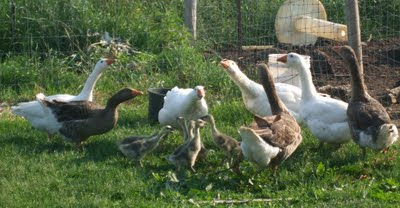Scientists have confirmed what every urbanite has long suspected – life in the city is more stressful.
Researchers have shown that the parts of the brain dealing with stress and emotion are affected by living among the crowds.
The findings help shed light on why those who are born and raised in urban areas are more likely to suffer from anxiety, depression and schizophrenia than those brought up in the countryside.
The team of international scientists behind the finding are unsure why city life is so bad for the nerves.
However, past studies have shown that exposure to green space reduces stress, boosts health and makes us less vulnerable to depression. The findings come from the brain scans of 32 healthy volunteers from urban and rural areas.
Go read the whole thing.
To be fair, we've found that life in the country isn't exactly stress-free, either. Livestock and gardens produce stresses of their own. Whenever you're trying to cultivate or nurture living things, life is unpredictable and can lead to worries or difficulties: A surprise late frost wipes out your seedlings. A surprise early frost destroys the tomatoes you were going to can for a winter's worth of sauce. The barn cat finds a way to go hunting in your poultry brooder, and feeds five baby turkeys to her kittens. (Five baby turkeys that, I might add, every hatchery is now sold out of for the year).
But would I trade these stresses for those of a city? Not on your life. I visit Chicago, DC, and NYC frequently enough on business; I certainly enjoy the change of pace, and appreciate the resources that cities can provide, but you can see in the faces of passersby the toll that day-to-day urban stress wrecks. I'm always more than happy to return home to the quiet of my farm.
I'd a million times rather deal with the stresses of livestock and a garden than with the stresses of city life. Worrying about the garden getting enough rain, or whether enough broilers will survive to maturity, is entirely different from worrying about whether your packed commuter train will get you to work on time. Because when you've worked through and solved the "rural stress," you get to enjoy the wholesome and delicious fruits of your labors. But when you've survived the "urban stress," all you've done is successfully gotten to work in a high rise in a concrete jungle.
I'll take the literal jungle of my pasture over that any day of the week.

